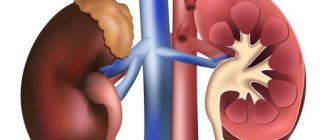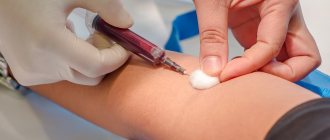The normal blood pressure range is from 100/60 to 140/90. But even in healthy people, after physical activity, such as walking and running, this figure may become slightly higher. This happens because blood circulation in the body increases sharply. You should only panic if the increased pressure, after the cessation of the factor that caused it, does not return to normal levels after some time. The permissible time for changed pressure due to external factors is 5 – 8 hours. If the indicators do not become normal for longer, then the risk of diseases associated with surges in blood pressure increases many times over.
The effect of physical activity on blood pressure
Light physical activity has a beneficial effect on human health. But even with simple actions, blood circulation increases, and pulse and blood pressure increase slightly. These indicators return to normal approximately 45 minutes after stopping the load. But a significant change in pressure due to stress indicates that the body is gradually losing its ability to adapt. Fluctuations in blood pressure by more than 50 points, even after serious physical exertion, are an alarming signal and a reason to seek medical help.
When walking, pressure tends to increase
In adulthood, the body reacts even to minor external factors, such as changes in weather or slight stress, and its ability to adapt decreases. As a result, after a walk, jumps in blood pressure may be observed. If such attacks are repeated with enviable regularity, then the person is diagnosed with hypertension.
Blood pressure surges that require medical advice
Blood pressure has the ability to change throughout the day. This is normal if the systolic and diastolic values are stable. Violation of the natural balancing of blood vessels leads to their jumps: from minimum to maximum and vice versa. This situation is dangerous, since the arteries may not withstand sudden changes, burst, and provoke the development of a heart attack or stroke.
Older patients are at risk for hypertension. For hypotensive patients, such changes threaten the development of hypoxia due to insufficient oxygen supply to the tissues. It is jumps in blood pressure that are a reason to consult a specialist, since without the exact cause of the pathology, its adequate treatment is impossible.
Norms and deviations of blood pressure when walking
The gold standard for blood pressure is 120/80, but each person's body is different, so readings from 100/60 to 140/90 are also considered to be within the normal range. It is also normal to have a slight increase in readings after minor physical activity.
Within normal limits, blood pressure changes no more than 50 points above and no more than 20 points below the constant value. Walking increases blood flow, which is what causes an increase in heart rate and blood pressure. But 45 minutes after the end of the load, all indicators should return to normal. If changes in indicators occur in a larger range or they do not return to normal an hour after exercise, then experts talk about the presence of pathology or a deterioration in the functioning of the adaptation mechanism.
It is more difficult for overweight people, because their greater body weight makes it more difficult for them to walk, so their blood pressure levels fluctuate more. In this case, the situation is aggravated in the presence of vegetative-vascular dystonia.
Diseases that provoke a pathological condition
Not only hypotension, but also pressure surges during movement can be caused by somatic pathology. Then consultation with a specialist is necessary to accurately diagnose the disease that caused the problem, since often such pathology indicates a danger to life and requires emergency care. The causes of hypertension are:
- thrombosis of deep or superficial vessels of the lower extremities;
- renal pathology with outcome in chronic renal failure (chronic renal failure);
- cerebrovascular accident;
- hormonal imbalance;
- stable hypertension of unknown origin;
- diseases of the musculoskeletal system.
The presence of these diseases is a reason for a thorough analysis of the patient’s compensatory capabilities when choosing physical activity.
Causes and provoking factors of increased blood pressure
Significant fluctuations in blood pressure during physical activity are caused by factors such as:
- The presence of vegetative-vascular dystonia;
- Functional disorders in the musculoskeletal system;
- Old age, as the walls of blood vessels become less strong and elastic;
- Osteochondrosis and hernia of some parts of the spine, due to deterioration of cerebral circulation;
- A sedentary lifestyle, in other words, lack of physical activity and physical inactivity. All this leads to the fact that even a light walk is stressful for the body, a person gets more tired and, accordingly, blood pressure changes more strongly;
- Tobacco smoking and alcohol abuse also significantly affect blood pressure and the condition of the vascular system.
Tobacco smoking contributes to significant fluctuations in blood pressure when walking
. In addition, strong fluctuations in blood pressure during mild physical activity can occur in people with weather dependence. This indicates that a person’s adaptive mechanisms are weakened, so the body acutely perceives changes in the environment and reacts more strongly to them.
It should also be taken into account that normal blood pressure readings for each person are influenced by such physiological factors as:
- Age;
- Body position in space;
- Body type;
- Gender.
In men and people with a strong build or who are overweight, the pressure changes more when walking. Typically, changes occur by 15–25 points if a person does not play sports. But within an hour everything returns to normal. But the persistence of changed indicators for several hours indicates the presence of pathology. Frequent repetition of this phenomenon is a reason to contact a specialist.
Among the non-pathological factors that contribute to the deterioration of adaptation mechanisms, there may be the following: incorrectly selected medications, errors in blood pressure measurement, increased emotionality or suspiciousness.
The benefits of walking for hypertension
Walking is an option for a healthy lifestyle and is a natural physical exercise. Blood pressure while walking is a biomarker of fitness or compensatory potential of the cardiovascular system. An increase in the upper or lower indicator during movement indicates insufficient dosed physical activity on the body.
Walking is healthier than spending time passively. They improve skin tone, reduce the risk of sudden death in the elderly, burn calories, fight insomnia, strengthen bones, stabilize hormonal balance, psycho-emotional mood, and prevent glaucoma and diabetes.
Walking also maintains optimal condition of the heart and blood vessels:
- the risk of acute conditions associated with surges in blood pressure is reduced;
- migraine headaches disappear;
- vascular tone, immunity, and the patient’s well-being increase;
- stress resistance increases;
- respiratory function is normalized due to intensive oxygen supply to tissues.
Walking is an excellent type of anaerobic training for a healthy person and a patient suffering from hypo- or hypertension. Doctors emphasize the advisability of different types of walking.
Dosed
The optimal way to improve health for patients with hypertension, hypotension, and other diseases of the cardiovascular system is dosed walking. It is especially indicated for rehabilitation after serious illnesses, surgical interventions, heart attacks, and strokes.
As a rule, such physical impact is short-lived and stimulates the functional potential of any internal organ. A sharp increase in effort is excluded, a gradual increase in distance, the time of movement is coordinated by the doctor.
Scandinavian
This type of walking involves the use of special sticks. Today it is the most effective, safe type of vascular training for patients of all ages, which guarantees:
- increasing myocardial contractility with a simultaneous decrease in arterial load;
- getting rid of extra pounds;
- stable psycho-emotional state, good mood;
- lowering blood cholesterol levels;
- stable decrease in elevated blood pressure by 9 units.
The first lessons take half an hour. Every 5 days their duration is increased by 10 minutes, up to an hour. This is the optimal training time.
Sports
Here you need to monitor your blood pressure and monitor your posture. This “work” is not suitable for everyone; trained patients can move at a speed of 7 km/h, athletes – 15 km/h. The entire training process is subject to coaching control. Not only the speed of movement is important, but the length of the step, rhythm, and change of pace.
Ski
Ski trips are loved by many. This is a very useful type of natural vascular training that prevents the development of hypertension in patients of any age.
But skis require some restrictions:
- the temperature should not exceed minus 10 degrees Celsius;
- snowfall and wind are a taboo for “travel” on skis;
- short distances are ideal, taking an hour of time with breaks (you can walk twice a day).
Compliance with all the rules of skiing brings joy and health, guaranteeing active longevity.
Characteristic symptoms
Diagnosing the onset of hypertension is not so difficult, the main thing is to be attentive to your health. You should pay attention to symptoms such as:
- Increased heart rate;
- Increased sweating. This is how the body tries to get rid of excess fluid;
- Dizziness and headaches;
- The appearance of black spots before the eyes;
- Surrounding objects may appear blurry.
The presence of concomitant diseases also increases the risk of hypertension. Among them are such violations as:
- Problems with the spine;
- Thrombosis of some vessels;
- Various hormonal disorders;
- Changes in vascular tone;
- Cerebral circulation disorders.
Ignoring problems and delaying seeking medical help can lead to aggravation of the situation and the development of new symptoms of hypertension, including nausea and vomiting. In addition, high blood pressure greatly increases the risk of strokes and heart attacks. Therefore, you should consult a doctor as soon as possible after detecting the first signs of a change in your condition.
Contraindications
Despite the obvious benefits of walking for the heart and blood vessels, abuse of such physical activity can cause harm. Complete refusal from walking training is applicable only if negative symptoms appear. The choice of the type of physical activity is decided by the doctor. Contraindications to walking are well known:
- frequent pressure surges of unknown origin;
- ACVA – stroke;
- thrombosis of blood vessels of the lower extremities.
This helps the patient and physician reach the necessary consensus when choosing a payload.
How to minimize blood pressure surges when moving
Problems with blood pressure due to physical activity are often harbingers of hypertension, so you need to consult a specialist as soon as possible, undergo the necessary diagnostics and prescribed treatment. The doctor will most likely recommend the use of various synthetic drugs in a certain dosage.
But if it is determined that this phenomenon is non-pathological in nature, or in addition to drug therapy, you can use various folk remedies that will help cope with unpleasant sensations.
Foods that can lower blood pressure include flax seeds, red pine cones, and more.
To prevent blood pressure from jumping up after walking, it is often enough to follow the following recommendations:
- It is necessary to walk in the fresh air every day;
- Walking speed should not be too fast. The appearance of shortness of breath will just lead to an increase in blood pressure. Therefore, it is better to walk at a comfortable pace;
- You can gradually increase the distance you walk each day;
- When walking, it is not the speed that is important, but the distance covered. To monitor this process, you can use a pedometer or a smartphone application.
Leading a healthy lifestyle has a beneficial effect not only on blood pressure, but also on the body as a whole. If the condition does not improve as a result of therapy and daily walks, then most likely the therapy was chosen incorrectly.
It is also important to remember that if pressure rises only after physical activity, and the rest of the time remains within the normal range, then the reason for this may be increased emotionality or error in measurements.
How to normalize blood pressure
Regular pressure surges are dangerous due to possible consequences: irreversible damage to blood vessels, heart, kidneys, brain, fundus of the eye. A person’s vision and memory deteriorate, and the risk of stroke increases. To prevent such consequences, treatment should begin when the very first warning signs appear. High blood pressure after a walk is such a signal.
In order not to provoke jumps, you should not walk at a fast pace. The number of steps taken is important for health, not their speed.
Walking should not be interrupted; walking is recommended for hypertensive patients. But it is necessary to reduce the load, start with a short walk, increasing the number of steps every day. This is especially true for those who previously led a sedentary lifestyle. Regular walking will improve the condition over time.
Drug treatment
If the indicators increase once, there is no need to take medications. In case of repeated rise in pressure after walking to 160/90, treatment should be started immediately. The disease can be stopped at the very beginning. The doctor prescribes monotherapy or combination treatment.
It is carried out using several groups of drugs:
- adrenergic blockers;
- atiazide diuretics;
- angiotensin-converting enzyme inhibitors and some others.
If the prescribed course of treatment does not help and high blood pressure is still observed after walking, the doctor cancels the prescribed medications and prescribes new ones.
Folk remedies
The initial stage of hypertension can be overcome without resorting to pharmaceutical drugs. In the treasury of traditional medicine there are time-tested recipes. Their use is possible only with the approval of the attending physician. Plantain tincture is known for its healing properties for hypertensive patients.
To prepare this product you will need 4 tbsp. l. crushed plantain leaves. The raw material is poured with a glass of vodka. After infusing the home remedy for 2 weeks, strain it and drink 30 drops three times a day.
A decoction of raw seeds (sunflower, pumpkin) has a lasting effect of reducing blood pressure. The seeds are thoroughly washed, but not peeled. Then they are placed in an enamel pan. One and a half liters of water are poured there and the mixture is allowed to boil. When it boils, turn down the heat and leave the pan on the fire for 2 hours. All that remains is to strain the broth and drink.
You need to drink one glass of decoction a day, but not all at once, but in small portions.
Due to its composition, flax seed is beneficial for hypertensive patients. Their norm for treatment is 3 tbsp. l. in a day. Take flaxseed in powder form. It is added to salads, sandwiches and other foods. Ground flax seeds cannot be stored for a long time: they lose their beneficial qualities.
The benefits of physical activity for the body
Moderate loads are necessary for the human body. They strengthen the immune system and help muscles stay toned longer. But in order for sports to bring benefits and not harm, you should approach the exercises competently. First of all, you need to take into account the individual characteristics of the body and choose the most optimal sport. You can entrust this to an experienced trainer or look for options on the Internet, based on personal preferences, the strength of physical activity during training and your own well-being when reacting to classes. Indeed, now in most sections you can attend the very first lesson for free, so that a person can get an idea of whether he will like the chosen sport and whether he will be able to do it.
It has been proven that regular exercise has a positive effect on the state of the cardiovascular system, breathing is stabilized, and tissues are saturated with the necessary amount of oxygen.
Walking in the fresh air is one of the most beneficial types of physical activity. They are not tiring if you walk at a comfortable pace, but they help avoid problems associated with physical inactivity. And time spent in the fresh air reduces the risk of the onset and exacerbation of various chronic diseases, strengthens the immune system and has a positive effect on the condition of the heart and blood vessels. In addition, complexion improves, excess weight goes away, and sleep normalizes. Regular walking for 45 minutes a day significantly improves a person’s general condition. Walking at least 3 km a day reduces the risk of mortality in older men by 1.5 times. To normalize sleep, walking a couple of hours before going to bed is optimal.
In addition, walking is a type of exercise that has the least impact on the joints, so this sport is allowed for almost all people.
Prevention
To prevent hypertension, you should follow a diet. With proper nutrition in the human body, blood clotting is reduced, the functioning of the liver and kidneys is normalized, and the condition of the walls of blood vessels is improved.
Diet rules for hypertensive patients:
- Eating protein foods.
- Reducing animal fats and fast carbohydrates in the diet.
- Consumption of necessary vitamins and microelements in sufficient quantities.
- Adding foods high in choline and methionine to your diet.
- Consuming foods containing iodine.
- Control over the level of fluid consumed - no more than 1.5 liters per day.
- Salt-free diet.
Hypertension, like any other disease, is easier to prevent. By following these recommendations and your doctor's advice, you can keep your blood pressure levels under control.
Healthy types of walking
There are several types of walking. Depending on the season and personal preferences, you can choose the best option.
Dosed walking
This variety is considered a natural form of physical therapy. For walking, you should choose smooth roads without slopes and start by walking 1 km per day, gradually increasing the distance to 3 km. This can be done once every 3 – 5 days in increments of 500 – 1000 m. If these loads are well tolerated, you can gradually increase the pace of walking and reduce the rest time. The speed can vary from very slow (70 steps per minute) to very fast (140 steps in 60 seconds). If after the next increase in pace there is a deterioration in health, then you should return to the previous speed. You cannot overload the body, otherwise even walking will do harm instead of good.
Race walking
Race walking is somewhat similar to running, but puts less stress on the joints. There are several features for this type of load:
- The speed of race walking is 130 – 200 steps per minute (this is a very fast pace, the distance covered is approximately 6.5 km per hour);
- During the process, one of the feet remains firmly on the ground at all times;
- The pitch is 90 – 120 cm;
- The supporting leg cannot be bent at the knee;
- The hands move quickly.
Race walking puts less stress on your joints
Nordic walking
This type of walking is carried out with the help of special sticks and uses all the muscles of the body, which has a beneficial effect on their condition and well-being in general.









